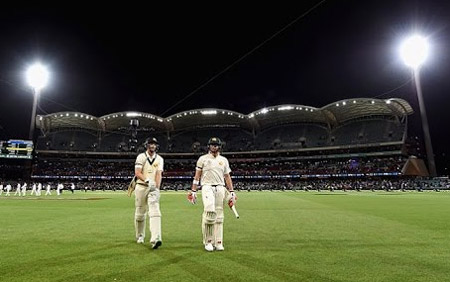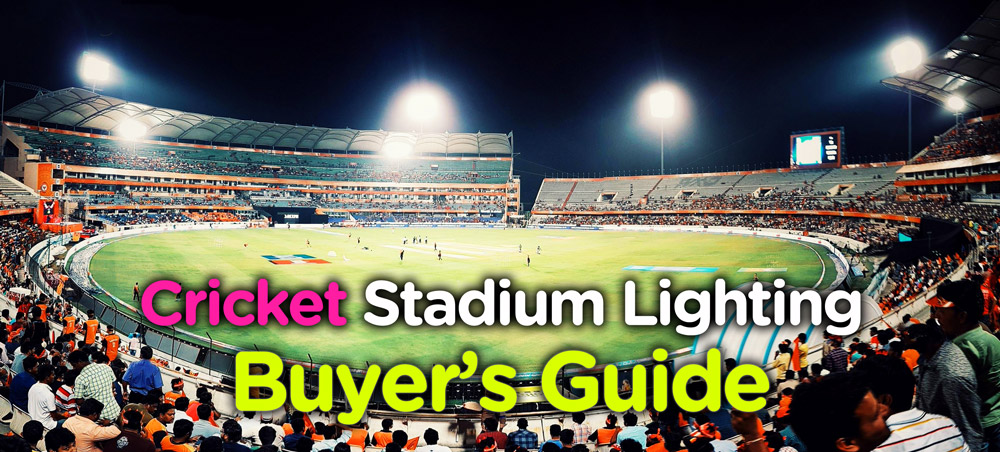Cricket stadium lighting involves more than the installation of flood lamps on high points. Before doing that, you will have to get a clearer photometric design so that you can get the best lighting results. Some of the commonest projects include the replacement of cricket field lighting system, installation, and changing of the lighting design. Cricket can take place outdoors or indoors as a game or training within netted areas. The two settings require a higher level of lighting so that the players, spectators and the coaches can follow the actions of players safely and the fast movements of the ball.
Importance of cricket field lights
 At times, the cricket ball can move at very high speeds, a situation that will require the players to react at closer quarters. All the phases of play have to be clearly visible. The batsman has to see the run up, the bowler’s arm movements and the delivery of the ball. The fielders and the bowler should also see the batsman, wicket and the ball’s flight clearly throughout the match.
At times, the cricket ball can move at very high speeds, a situation that will require the players to react at closer quarters. All the phases of play have to be clearly visible. The batsman has to see the run up, the bowler’s arm movements and the delivery of the ball. The fielders and the bowler should also see the batsman, wicket and the ball’s flight clearly throughout the match.
The preference for natural daylight used in sports halls and stadiums is strong. With the approach, careful shading and proper coordination of light with the play areas is important to ensure that the distribution of light is even and to avoid direct sunlight. The artificial lighting should produce conditions similar to natural daylight.
Cricket stadium managers achieve that by using many fluorescent lights that they mount on high poles. They can choose to run the light fittings parallel on both sides of the wicket ensuring that they are in line with the play direction. They can also choose to mount them transversely with screening to prevent the line of sight of the batsman.
Lamps with diffusers that provide lower glare rating can help control glare. Light colored ceilings also reduce contrast and can, therefore, help in the reduction of glare. Careful coordination of lighting locations, net tracks, heating systems, and the wicket can help eliminate shadows and facilitate achievement of even light distribution.
Metal halide lamps vs. LED cricket stadium lamps
Perhaps, you remember the temporary power outage that turned the Super Bowl Sunday into a blackout Sunday. On that day, the Baltimore Ravens were taking on against the popular San Francisco 49ers. Unfortunately, the Superdome had a power outage that continued for 34 minutes. In fact, if LED lights were the once used in this field in New Orleans, the situation would have been different.
The light fixtures used were the main problem. After the blackout, the technicians restored the light immediately, but like many other sports venues, the Superdome relied on halide lamps for the illumination. The lights took 30 minutes for warm up and the game could not continue until the light fixtures had attained the full brightness.
Metal halide lamps are high intensity discharge lights that provide very bright light – in white and blue spectrums. They have been in use since the early 1960s, mostly in retail stores and sports fields. The ability of these lamps to produce very bright white light, high luminous efficacy, and long lifespan has made them a popular choice for very many years.
To produce light, an electric arc has to go through a gaseous mixture. The lamps contain gases like argon, mercury, xenon in addition to various metal halides. The metal halides result from a combination of halogen with metals. In a metal halide lamp, the metals have to be mixed with iodine or bromine. The used type of metal halide dictates the color temperature of produced light.
Unfortunately, metal halide lamps have many drawbacks. Here are the common problems to expect with these lights.
Limitation of metal halide
1. Longer warm up time
After switching on the metal halide lamps, they will take a very long time to warm up. To achieve the full brightness, these lamps can take between 15 minutes and 30 minutes.
2. Longer cool down time
If by any chance someone disconnects the lamps from the power switch, they will switch off automatically and take 5-10 minutes to restart.
3. Color shifting
This is the commonest problem of the halide lamps. As they age, the light will not be uniform.
4. Arc tube rupture
The metal halides contain arc tubes, which deteriorate as the lamps age. They start discoloring and producing more heat. That alone can cause them to rupture.
5. They contain mercury
Even though the amount of mercury is small, it is toxic. The disposal process of these lamps is intricate.
6. UV radiations
Immediately the lamps are switched on, they generate UV (ultraviolent) radiations. Exposure to the radiations can cause premature aging and the risk of skin cancers and cataracts.
Why go for LED lights for cricket stadiums
1. Better energy efficiency
LED lights offer many benefits for cricket stadiums. They are energy-efficient and reduce energy usage by around 75 percent. Moreover, they maintain the original brightness in their whole life. The lamps do not flicker or buzz like most traditional lighting technologies and reduce the maintenance costs due to their very long lifespan. Moreover, they do not contain any harmful components, which mean that their disposal process is uncomplicated.
2. High color rendering index
The lights have a higher color rendering index – above 80. That should tell you that they bright out the real colors of the objects. Manufacturers supply them in various color temperatures and finding one that will match the needs of your cricket stadium or field is easy. LEDs consume minimal electricity. You can, therefore, power them by solar and avoid relying on the power grid.
3. Dimmable lighting control for cricket field
LED lighting allows control of the light output. They boast a sophisticated control system and swift communication. When paired with advanced lighting controls, LED lighting technology can boost the energy-efficiency and reduce the operating costs. Even though having the lights switched on during a match, they should light equally. You can lower the light output by up to 50 percent with a single switch. They are perfect for broadcasting and provide uniform lighting on the cricket field or stadium.
Conclusion
When choosing LED lights, ensure that they are of high quality. They should deliver high brightness, color temperature, and luminous efficiency. They should be waterproof and with efficient heat dissipation. Those with higher heat conducting rate such as 238W/mk are a good choice. They should provide good ventilation. Speaking of the color rendering index, go for one with a CRI above 90. Lights with 5600K color temperature are preferable in cricket.

